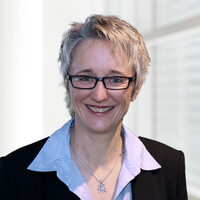Where is Oerlikon setting priorities to meet the 2030 sustainability objectives?
Georg Stausberg: All Oerlikon sites that account for 50% of our total energy consumption already have an energy management system according to the Oerlikon standard or to ISO 50001; all the others will follow successively by 2030. This is a very important measure for achieving our goal. On the other hand, we want the growth of our enterprise to continue at the same time. But more production also means more energy consumption. That means we need targeted measures to reduce it: Eliminating waste, renewing machines, and utilizing sustainable energy sources, such as photovoltaic and green electricity.
Sven Hicken: I can address that based on the previous example because our efforts extend even to our equipment manufacturing. With respect to energy consumption, or energy efficiency, the question of how long the coating process takes and how many resources are consumed is very significant, including for the issue of costs. As a provider of coating services, this is just as important for us as for our customers who use our machines themselves.
How does Oerlikon measure its ecological footprint?
Georg Stausberg: Actually, it is hardly possible for us as a service provider and equipment manufacturer to say how much turnover we generate with sustainable solutions. There are still no industrial standards for this. That means we have had to define standards for ourselves, and that keeps an entire project team busy internally. In the meantime, this is the reason we are only reporting what we can actually measure.
Principally speaking, coatings make a significant contribution to sustainability because they either extend the service life of components or reduce their weight. Beyond this, the efficiency of our equipment, (for example, in terms of energy and water consumption as well as emissions) also contributes to sustainability. We have good comparison values for these two aspects and can also quantify the advantages.
With lightweight-construction components for aircraft and cars, however, measurability becomes more difficult. For example, a coating from Oerlikon means that the fuel in an aircraft turbine can be burned at higher temperatures, thereby improving combustion and reducing kerosene consumption. Our customer, however, the manufacturer of the turbine blade, doesn’t benefit from this directly. The effect can only be discerned in the second, or even the third, stage in the supply chain.
What contribution is Oerlikon’s R&D making to the sustainability objectives?
Sven Hicken: For one thing, this deals with the usual topics: How can we reduce the energy consumption of an aircraft? What influence do alternative fuels such as hydrogen have on engine components, and what properties do coatings require for this? Or: What coatings can be employed to make consumables such as lubricants or coolants unnecessary?
In addition, we are engaging with the topic of e-mobility quite intensely. We have a strong tradition dealing with coatings for the components of internal combustion engines, but now our customers are increasingly needing solutions for alternative drives. Here as well, coatings can not only protect components, but also even replace other materials, such as insulation.
What is the long-term focus of Oerlikon’s R&D, specifically with reference to 2030?
Sven Hicken: For us as researchers, the topic of sustainability opens up new, very exciting areas of activity. For example, that of energy generation: In stationary and mobile fuel cells, energy is generated from hydrogen by means of a chemical process, and coatings play an important role here. We are also looking at solid-state batteries because the Achilles’ heel of e-mobility today is still the battery. Using solid-state batteries would enable a significant increase in the amount of energy stored per volume. One possibility would be using powders in the future instead of today’s liquids. For us as a manufacturer of metal powders, that is, of course, a highly interesting field of research!
Many thanks for the interview!





































